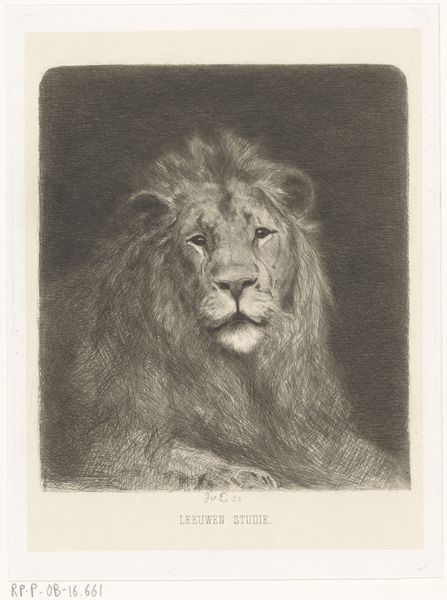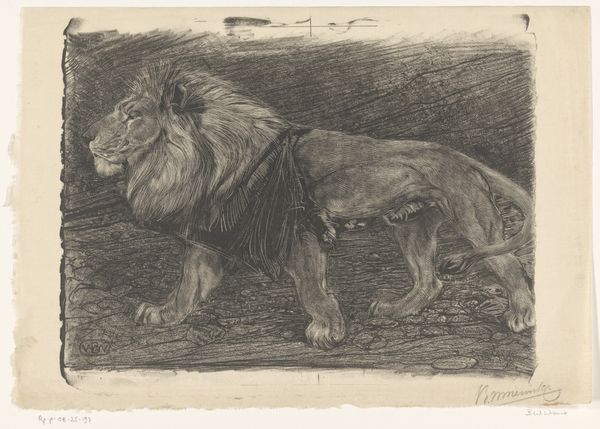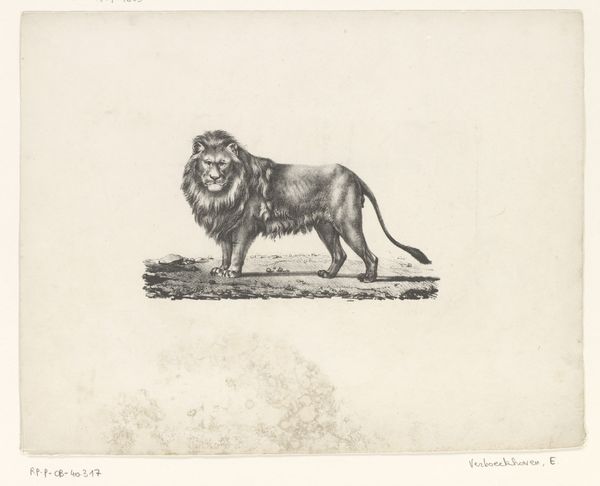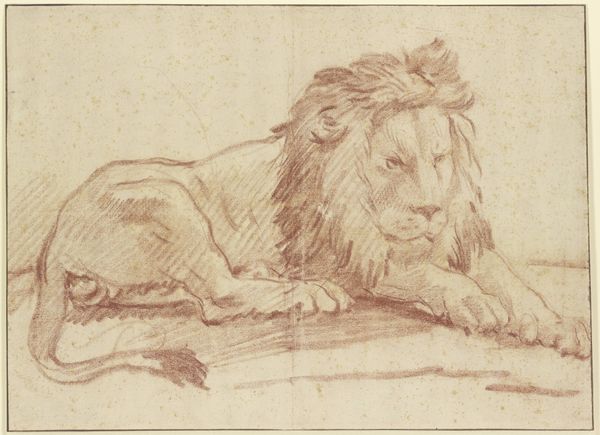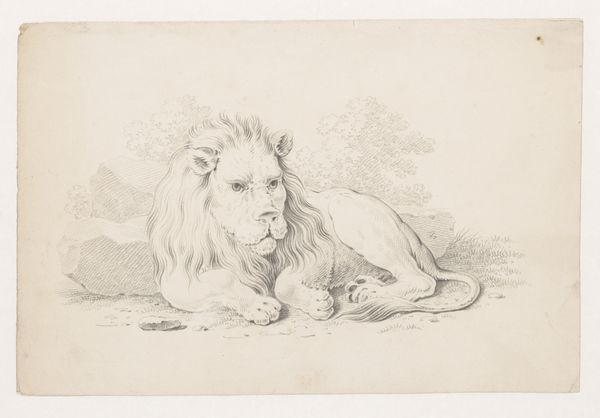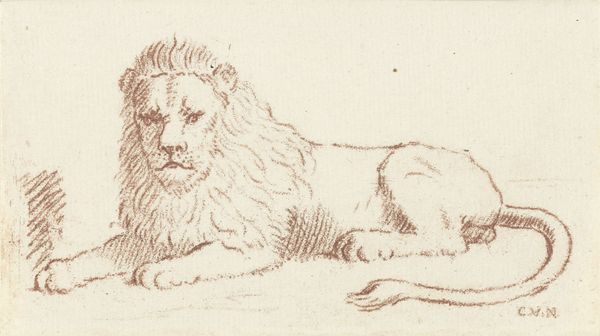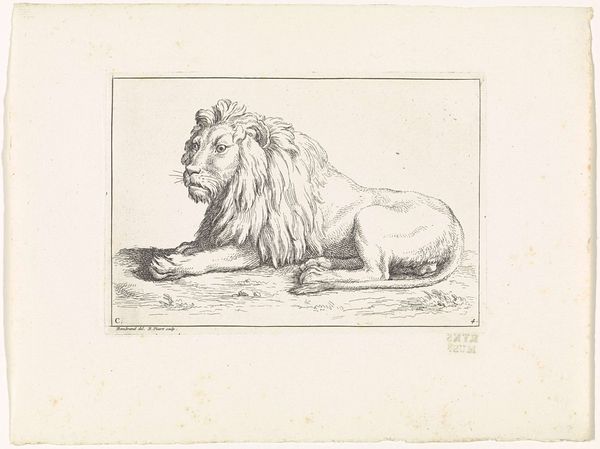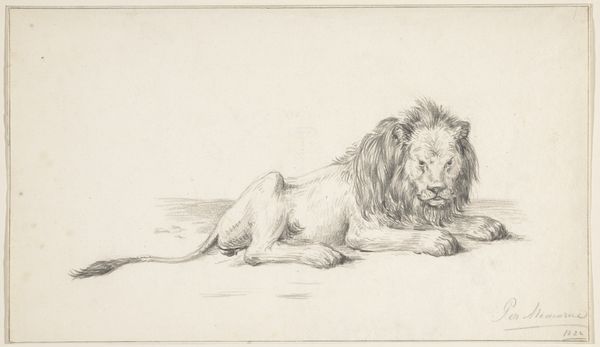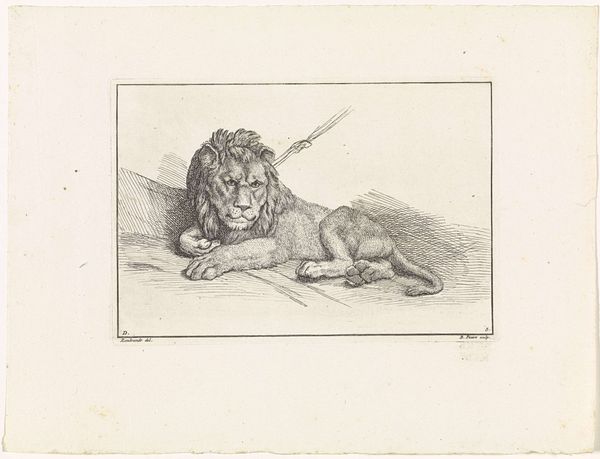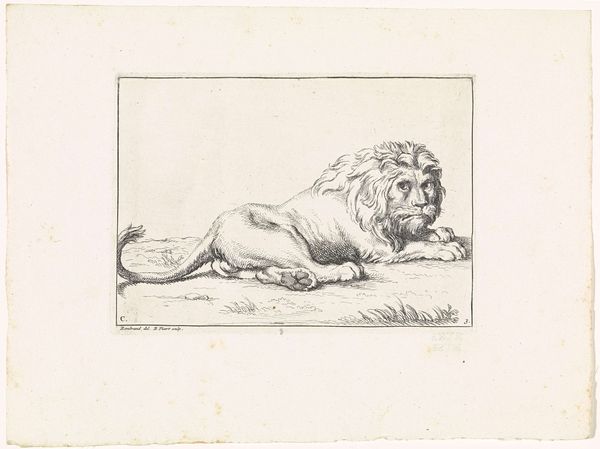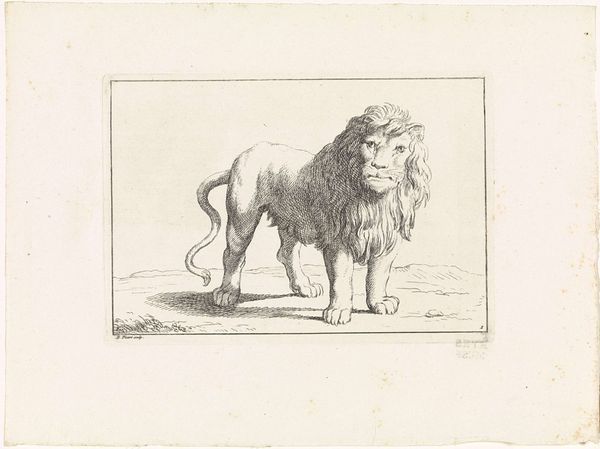
drawing, charcoal
#
portrait
#
drawing
#
charcoal drawing
#
pencil drawing
#
charcoal
#
realism
Dimensions: height 148 mm, width 177 mm
Copyright: Rijks Museum: Open Domain
Curator: We’re now standing before Joseph Schippers’ "Liggende leeuw," created in 1894. It’s a charcoal drawing housed here at the Rijksmuseum. Editor: It exudes a sense of weary resignation, wouldn't you say? The lion's posture, those downcast eyes. Curator: Indeed. What’s striking is the masterful use of charcoal to depict texture – from the dense mane to the rough texture of what appears to be stone tiles. Note how Schippers builds up the form with layering of charcoal to capture a true sense of mass. Editor: It speaks to the means of production available at that time. Charcoal allowed a level of accessibility and quick execution – think about sketching directly from life at a menagerie or zoo. Were there preparatory sketches available? Knowing more about Schippers’ method helps to reveal this artwork. Curator: We don’t have direct evidence, but looking at the interplay between light and shadow here we see how expertly Schippers constructs space through contrasts. The diagonal line of the body draws the viewer's eye across the frame, toward the strong contrast between the lion and the simple door at the background, an exercise in balancing tone and volume. Editor: The materiality suggests something deeper than a mere observational sketch, even beyond studies of natural form in nineteenth century Dutch drawings. One senses an undercurrent of societal anxieties and colonial-era power dynamics perhaps inadvertently made manifest by this artist. Curator: I see what you mean. Yet I believe Schippers achieves a purely aesthetic goal—demonstrating masterful realism within the formal structure of a carefully balanced composition, all driven by his skillful wielding of the charcoal medium. Editor: Perhaps. Nonetheless, considering its cultural context, the image certainly speaks to human relationships with animals and speaks of access and possession – the beast now tamed in front of us and subdued through capture on the page. Curator: Regardless of the symbolic meaning we find in it, Schippers’ "Liggende leeuw" provides a stunning exploration of form, shadow, and masterful handling of his chosen material. Editor: And reminds us of the multiple narratives and critical debates residing inside even what appears a straightforward animal study from that period.
Comments
No comments
Be the first to comment and join the conversation on the ultimate creative platform.

